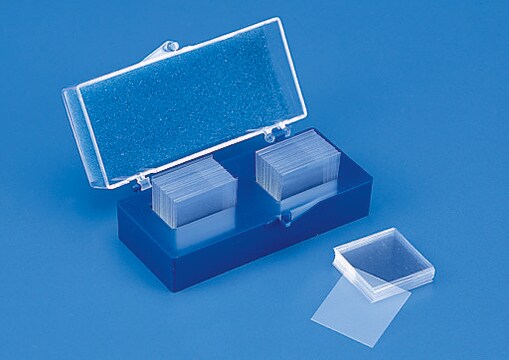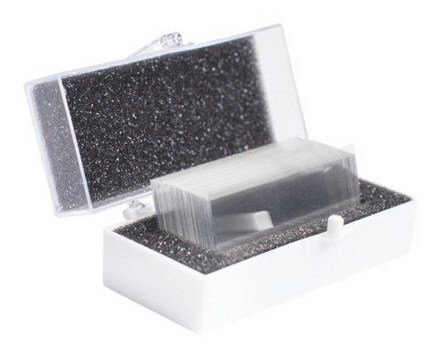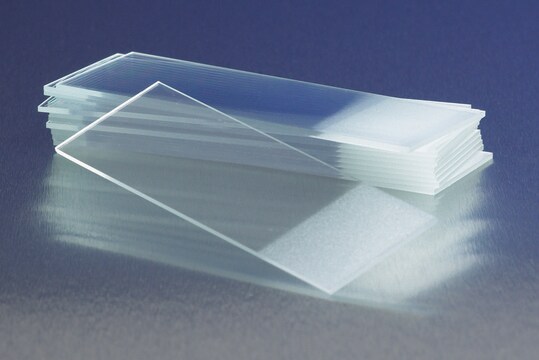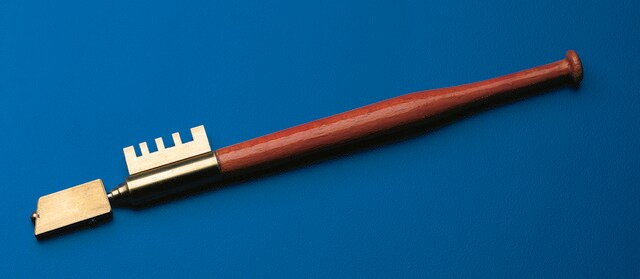643246
Gold coated glass slide
99.999% (Au), layer thickness 1000 Å
About This Item
Produtos recomendados
Nível de qualidade
Ensaio
99.9% (Ti)
99.999% (Au)
C × L × espessura
3 in. × 1 in. × 0.7 mm
espessura da camada
1000 Å
transmitância
380-700, >91% (for the glass microscope slide alone)
índice de refração
n20/400 1.52 (lit.)
ligação da matriz
Titanium, as adhesion layer used to bind the gold to the aluminosilicate glass cover slip
cadeia de caracteres SMILES
[Au]
InChI
1S/Au
chave InChI
PCHJSUWPFVWCPO-UHFFFAOYSA-N
Procurando produtos similares? Visita Guia de comparação de produtos
Aplicação
- Simple surface modification of poly(dimethylsiloxane) for DNA hybridization.: Highlights the application of gold-coated glass slides in creating effective biosensors for DNA hybridization, supporting innovations in genomics and pharmaceutical research (Zhou et al., 2010).
- Multimodal spectroscopy combining time-of-flight-secondary ion mass spectrometry, synchrotron-FT-IR, and synchrotron-UV microspectroscopies on the same tissue section.: Utilizes gold-coated glass slides to integrate multiple spectroscopic techniques, enhancing the analysis of complex biological samples, pivotal for cutting-edge research in biochemistry and material sciences (Petit et al., 2010).
Características e benefícios
Outras notas
Código de classe de armazenamento
11 - Combustible Solids
Classe de risco de água (WGK)
nwg
Ponto de fulgor (°F)
Not applicable
Ponto de fulgor (°C)
Not applicable
Escolha uma das versões mais recentes:
Já possui este produto?
Encontre a documentação dos produtos que você adquiriu recentemente na biblioteca de documentos.
Os clientes também visualizaram
Artigos
1-Adamantanethiol (1-AD), an example in this spectrum of molecules with distinct chemical and physical properties, forms self-assembled monolayers (SAMs) on Au{111} that are displaceable when exposed to other thiolated molecules from solution, vapor, or contact due to weak intermolecular interactions in 1-AD SAMs.
Hybrid organic-inorganic sol-gel materials containing silica were first called “ORMOSILs” in 1984.
Protocolos
Preparing Self-Assembled Monolayers
Nossa equipe de cientistas tem experiência em todas as áreas de pesquisa, incluindo Life Sciences, ciência de materiais, síntese química, cromatografia, química analítica e muitas outras.
Entre em contato com a assistência técnica







